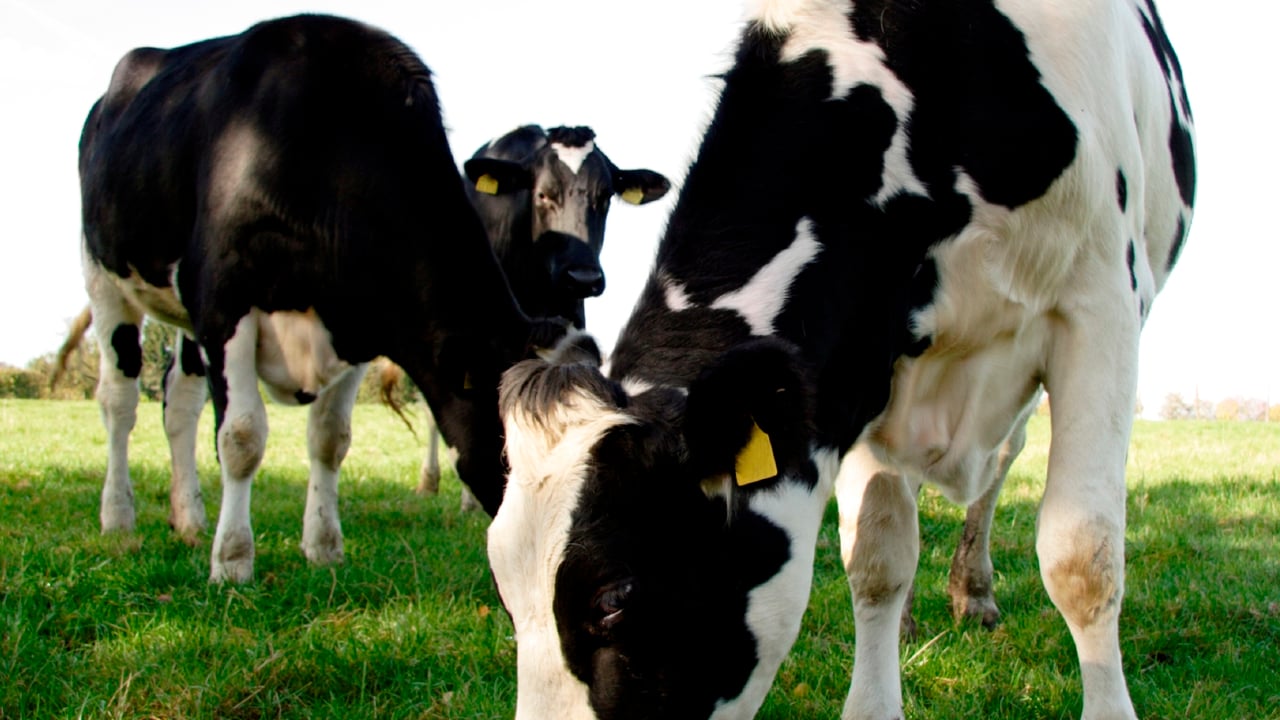Sponsored Article

Sponsored Article
Boost your cow's immunity with trace minerals
Sponsored Article

Take the hardship out of administering oral trace mineral supplements to your cows by talking to your veterinary surgeon about an injectable trace mineral top-up during the transition period.
Pre-calving cows can benefit from supplementary trace minerals but oral trace mineral supplements like drenches and boluses can be difficult and time consuming to administer.
Trace minerals are a vital component of bovine immunity and trace mineral imbalances have been linked with poor disease resistance in Irish dairy herds.
Selenium (Se) is vital for immune cell killing ability; copper (Cu) is known to affect specific immune functions; and zinc (Zn) deficiencies have been linked to immunity impairment and lower disease resistance.
One of the key factors for farm profitability during the transition period is keeping cell counts and mastitis incidence down.
The cost of high somatic cell count (SCC)/mastitis in Ireland is about €25 million per annum. Mastitis cases have been conservatively estimated to cost between €250 and €300/case.
During the transition period, immunosuppression commonly occurs and cows are increasingly susceptible to a number of diseases. Oral minerals alone may not be enough to ensure your cattle are in optimal mineral status for peak performance.
Studies have shown supplementing with injectable trace minerals in the pre-calving period or at drying off could enhance immunity in your herd by rapidly raising trace mineral stores which could help to ensure reduced disease throughout the transition period.
There is a natural decline in the trace mineral status of cows in the last trimester of pregnancy as there is an increasing demand for trace minerals for foetal development.
In the pre-calving period, even well orally supplemented cows can become mineral depleted due to the growing unborn calf. The foetus will increase in weight by 50% in the third trimester and during this period the bulk of the trace mineral transfer to the calf will occur.
Transition cows can deplete their own mineral reserves transferring minerals to the growing unborn calf. This can have implications for the upcoming breeding season. Some cows may not have adequate mineral stores to transfer to the calf.
Calves from mothers low in Cu and Zn levels have an increased risk of diarrhoea and the risk of perinatal mortality or stillbirth is drastically higher for calves from mothers with trace mineral deficiency.
Cows deficient in some key trace minerals are strongly linked to growth delays in calves.
During the transition period, from late pregnancy to early lactation, mineral requirement needed for foetal growth and milk synthesis increase dramatically, exceeding the amount the cow can obtain from dietary sources.
This issue is further exacerbated by falling intake levels. Prior to and following calving there is a natural fall in oral intake levels (usually decreased 30 to 35% during the final three weeks prepartum). Thus, oral nutrition alone might not be enough to ensure cows have the adequate minerals to maintain disease resistance.
For more information, click here.
Avoiding clinical disease in heifers is particularly important. In their first transition period heifers are preparing for their first calving, commencing lactation and all this while they are still growing.
As a result, transition period heifers need specific attention in relation to trace mineral top up.
Despite the widespread use of oral mineral supplementation, oral trace minerals are poorly absorbed by cattle. Depending on the source of the mineral the level of absorption varies greatly.
Oral supplementation alone can take weeks to raise the mineral stores of cattle which may lead to a prolonged calving interval and repeat services. As an example, for every 100g of Cu fed orally, only at most 1–5g is actually absorbed into the blood stream.
| Mineral | Oral Absorption % (NRC 2011) |
|---|---|
| Copper | 1-5% |
| Zinc | 10-20% |
| Manganese | 0.15-1.2% |
| Selenium | 34% |
The poor absorption of trace minerals from oral sources is further deteriorated by interactions with other minerals in the rumen called antagonists.
Some trace minerals like iron (Fe), sulphur (S) and molybdenum (Mo) can impair the absorption of other essential trace minerals like Cu by binding with the Cu in the rumen and making it insoluble and unavailable to the cow.
All oral minerals are subject to the harsh rumen environment so the mineral levels in the feed will not match the mineral levels being absorbed by the cow.
“Before you invest in expensive additional oral trace minerals during this high demand period, ask your veterinary surgeon about combination injectable trace minerals,” said Patrick O’Neill, veterinary surgeon, Warburton Technology Ltd.
Oral mineral nutrition is essential for the maintenance of cattle, but at critical phases of production like pre breeding, the challenges of increased demand, variable oral intake, rumen antagonism and poor absorption of oral minerals - oral nutrition alone might not be enough to ensure your cattle are in adequate trace mineral status to ensure your herd meets the target performance.
Strategic injectable trace mineral supplementation bypasses the harsh rumen environment and antagonists, rapidly raises circulating mineral levels in cattle within eight-to-10 hours and after 24-hours key mineral storage organs like the liver show raised mineral concentrations.
Cows supplemented with injectable trace minerals showed significant reductions in SCC/mastitis and uterine disease compared to control cows.
Despite already being maintained on a high plane of nutrition, strategic trace mineral injection reduced clinical disease and improved performance in herds in a 2013 study in Cornel University involving over 1,400 cows. Pre-calving supplementation also benefited the unborn calves, in the same study pre-calving supplementation reduced stillbirths by 29%.
Transition cow supplementation has been shown to raise not only the trace minerals in cows but also the essential enzyme levels. These enzymes are key to good immunity and adequate levels reduce disease in cows and heifers during the transition period.
In a 2020 US study comparing the effects of boluses, drenches and a combination trace mineral injection, the injectable trace mineral supplement was the only effective method of increasing mineral concentrations in plasma and liver.
It has been reported that on a farm with 100 cows, there can be a reduction in farm profit of €8,000-31,000 when the SCC is higher than 100,000 SCC.
Ask your vet how a trace mineral injection could help fight disease in your herd.
For more information, click here.
References available from Virbac on request.
Sponsored Article






